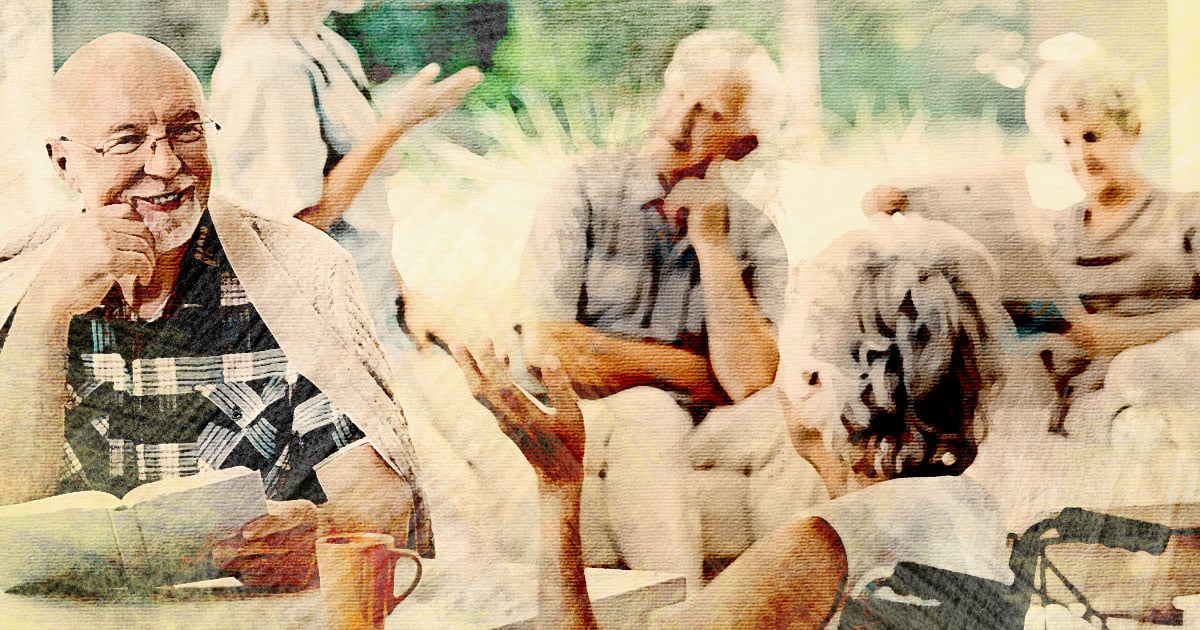When it comes to making the important decision on whether assisted living is the right choice for a loved one, every family is different, and how they come about their final choice can vary greatly.
The process of determining if assisted living is right for a loved one will undoubtedly come with its share of stress. One of the best ways to be prepared is to be proactive in exploring the many senior living options available.
Here are some insights about evaluating the different types of assisted living facilities and how to best compare them.
The Assisted Living Choice
Assisted living is best defined as a long-term care option for seniors who need help with some daily activities. Unlike the more structured, institutional care offered by nursing homes and skilled nursing facilities, assisted living provides a home-like residential setting as part of a larger community of seniors with similar situations.
Assisted living offers various-sized apartments for residents to call home. The individual apartments create a community that enjoys social opportunities, health care, support services, and 24/7 staffing. Assisted living may be more affordable than other options, while also providing optimal independence and life-enriching activities.
Assisted Living Services Basics
- Assisted Living apartments make up the assisted living community and vary from private studio units to one- and two-bedroom style homes. Each resident may furnish and decorate their unit in their own personal style. While some units may feature kitchenettes, all have safety features throughout, and they are typically wheelchair accessible. Every residential unit should feature an emergency call system connecting it to the 24/7 staff.
- Professional Assisted Living Services vary among assisted living communities. The best facilities will utilize resident assessments to create personalized care plans. These plans cater to residents' personal preferences while addressing any daily individual needs.
- Daily Living (ADL) Services assist residents with daily living services as needed, including medication support, personal hygiene care, and emotional support.
- Medication Management by a Licensed is vital in a resident's wellness plan. Only fully licensed nursing team members should assist with medication management.
- Rehabilitation and Therapy Services play an essential role in helping residents recover after an illness or injury. An Assisted living facility provides physical, occupational, and speech therapy for residents based on their care plan and health needs. A Registered Nurse oversees these therapies.
- Social wellness is a crucial component for resident engagement and health. In keeping with a feeling of independence and high quality of life, assisted living communities provide social, wellness, and educational opportunities that promote daily engagement and interaction with others. The range and scope of an assisted living community's social and wellness programming is often one of the biggest differentiating factors.
Keys for Comparing Communities
No two assisted living communities are created equal. When deciding on a community for your loved one, research on care philosophy is so important. Different communities will structure care and cost differently for residents.
When comparing different facilities, do not overlook any of these key points of variation: Amenities Package, Standard Services, and Optional Lifestyle Activities.
The amenities are a very important aspect of any assisted living facility. Whether it is an attractive and inviting dining area, relaxing outdoor gathering spots, safe and comfortable activities rooms, or the convenience of barbershops and salons, the more inviting the space the more likely residents will engage.
While there should be transparency on additional costs, utilities, grounds keeping, and maintenance are typically included as a part of the amenities package.
In an assisted living community, staff should directly provide help and support with the “activities of daily living” (ADLs). These ADL services may include housekeeping/laundry service; access to health care and medical services; assistance with meals, bathing, dressing, walking; and management of medication.
Programs and activities are often minimized or even overlooked when it comes time to make a final assisted living decision for a family member. The importance of a community's lifestyle activities cannot be overemphasized.
Here are several key lifestyle choices that should be part of any facility's lifestyle activities: Scheduled transportation; exercise and wellness programs; social and recreational activities.
5 Discerning Assisted Living Factors
In addition to the variables in assisted living communities' activities and social programming, here are five primary areas where every family should pay close attention to differences that matter when comparing one facility to another.
- Pricing structure & monthly/annual costs
- Convenient access to medical care
- Amenities & personal services list
- Operational culture
- Corporate or private ownership structure
Family-owned Communities Versus Corporate Assisted Living Facilities
Another point of distinction for assisted living communities is ownership. While the distinction may be subtle in some cases, there tends to be a significant difference between family-owned assisted living facilities and those that corporations run.
Family-owned facilities are more personal, with the family owners involved and accessible to residents, families, and staff. Family-owned facilities tend to be able to react and make changes as needed.
A corporate-owned assisted living facilities deal with layers of decision-makers. They tend not to react or make changes to a community. Profit margins and the communities census are the primary motivators for corporate stakeholders.
Make Your Senior Living Decision
After reviewing an assortment of assisted living community options, an in-person visit must be made to ensure absolute confidence in a final decision. When comparing communities for a family member, try to incorporate these criteria in your decision:
- Quality of life
- Standard of care
- Cost & value
An in-person visit offers an opportunity to determine if an assisted living community is a good fit for a senior. The chance to meet the staff and existing residents provides a first-hand evaluation of the physical layout, the individual unit features, the process for needs assessment, access to health care, services and amenities, the dining program, and a chance to discuss costs and finance options.
These factors will make a final decision easier to arrive at and judge overall value. After your visit, think to yourself, will this community provide you and your loved one peace of mind?


